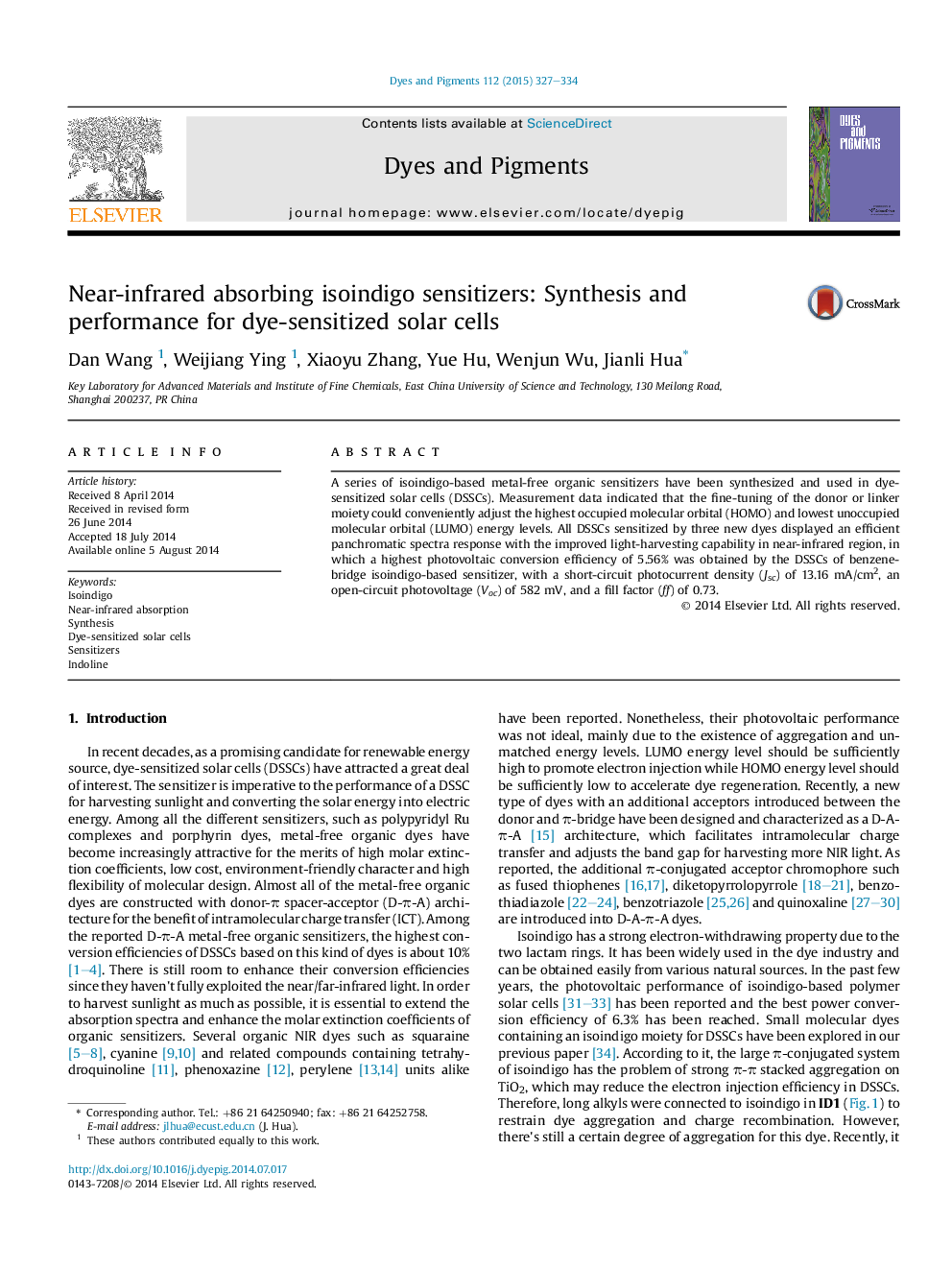| Article ID | Journal | Published Year | Pages | File Type |
|---|---|---|---|---|
| 175966 | Dyes and Pigments | 2015 | 8 Pages |
•A new series of isoindigo-based sensitizers were synthesized through simple routes.•Indoline elevates the HOMO energy level and gains larger short-circuit current.•All three dyes have a spectra response extending to the near infrared region.•ID9 showed the best overall conversion efficiency of 5.56%.
A series of isoindigo-based metal-free organic sensitizers have been synthesized and used in dye-sensitized solar cells (DSSCs). Measurement data indicated that the fine-tuning of the donor or linker moiety could conveniently adjust the highest occupied molecular orbital (HOMO) and lowest unoccupied molecular orbital (LUMO) energy levels. All DSSCs sensitized by three new dyes displayed an efficient panchromatic spectra response with the improved light-harvesting capability in near-infrared region, in which a highest photovoltaic conversion efficiency of 5.56% was obtained by the DSSCs of benzene-bridge isoindigo-based sensitizer, with a short-circuit photocurrent density (Jsc) of 13.16 mA/cm2, an open-circuit photovoltage (Voc) of 582 mV, and a fill factor (ff) of 0.73.
Graphical abstractA series of isoindigo-based metal-free organic sensitizers have been synthesized and used in dye-sensitized solar cells (DSSCs). All DSSCs sensitized by three new dyes displayed an efficient panchromatic spectra response with the improved light-harvesting capability in near-infrared region, in which a highest photovoltaic conversion efficiency of 5.56% was obtained by the DSSCs of benzene-bridge isoindigo-based sensitizer.Figure optionsDownload full-size imageDownload as PowerPoint slide
